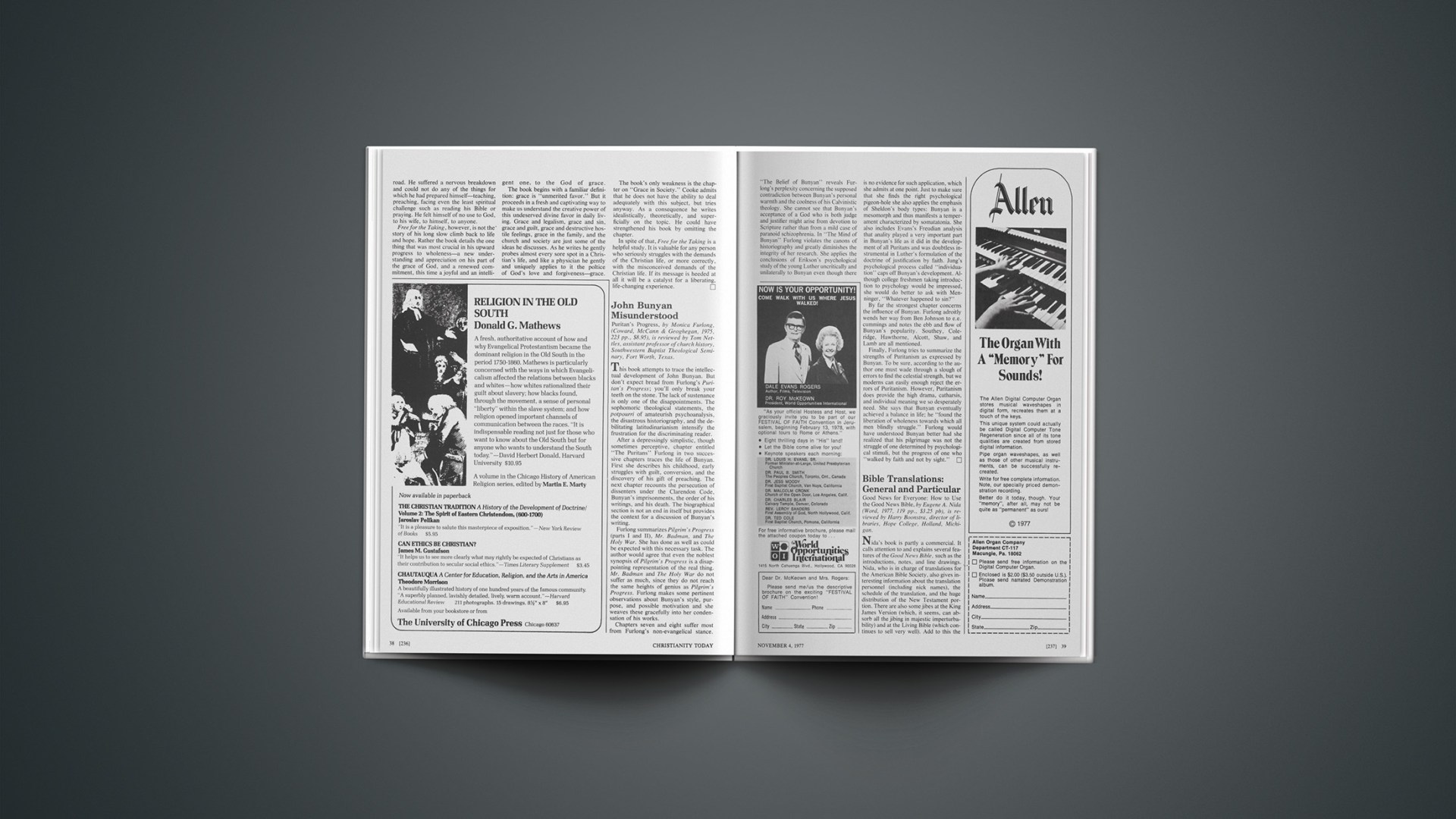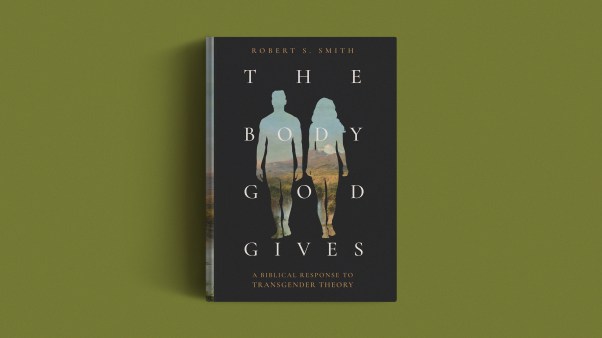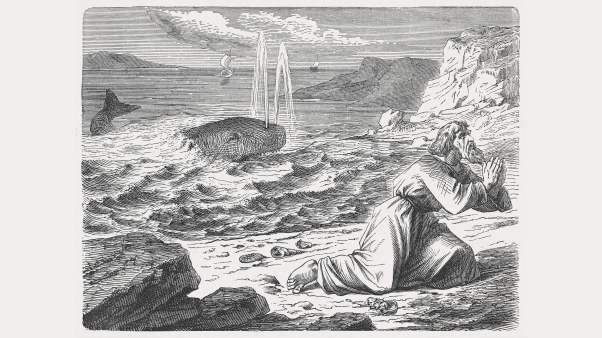Our Brethren In Communist Europe
Discretion and Valour: Religious Conditions in Russia and Eastern Europe, by Trevor Beeson (Collins+World, 1976, 348 pp., $2.95 pb), and Protestants in Russia, by J. H. Hebly (Eerdmans, 1976, 192 pp., $3.65 pb), are reviewed by Alan H. Winquist, assistant professor of history, Taylor University, Upland, Indiana.
The problem with studies on the state of the church in Eastern Europe is that they quickly become outdated. Yet the research presents valuable historical background, recent successes and failures, and the differing conditions under which these churches are operating. Both books are highly readable summations, but one must consult more detailed studies on many matters.
Beeson (British journalist and minister) wrote his survey based on data gathered by a team of researchers working for the British Council of Churches. The study, which includes the Christian and Jewish communities of the eight Eastern European communist-controlled nations plus the Soviet Union west of the Urals, does not go beyond events of 1973, the year before it was published in Britain. Also not included is the state of the Moslem faith, the recent growth of the Baptist and Orthodox churches in Siberia and Central Asia, and the Church in Armenia.
Several themes run through Beeson’s study. As the title states, the main church response to continually shifting government religious policies that are particularly confusing and inconsistent in the Soviet Union has been a combination of discretion and valour. In other words, this has taken the form of either responsible accommodation and accepting less than the ideal or of defying the law and the authorities that frequently lead to suffering and even death.
Another thesis is that the Eastern European churches, like those in the West, are experiencing repercussions from increased secularism stemming from the movement of population to urban areas. Beeson believes that decline in church vigor is not caused so much by repressive government policies as by the growth of urbanization, which leads to increased secularism. Beeson notes that there is a wide variety of conditions under which practicing Christians and Jews are living in the East. This is related in no small measure to historical experiences.
I find Beeson’s descriptions of the churches in the satellite countries more interesting than of those in the Soviet Union, mainly because more attention has recently been focused on the latter. Some fascinating facts include the statement that with regard to Poland “probably no country in the world is more tenaciously Catholic.” For example, attendance at Mass on Sundays in urban areas is 77 per cent and in rural areas, 87 per cent. In the German Democratic Republic, the Lutheran Church still owns about half a million acres of agricultural land, Radio GDR broadcasts a religious service every Sunday at 7:30 A.M., and it has more church musicians than in any other country in the world. Furthermore, during World War II many Christians shared prison cells and concentration camp experiences with the communists, resulting in today’s “genuine, but grudging, respect at top level between Church and State in the GDR.” Beeson acknowledges the difficulty experienced by Lutherans in working with young people and in obtaining permission to build new churches.
Filmstrips
Among recent filmstrips on Bible and theology for high schoolers and adults we mention the following. Thomas S. Klise (Box 3418, Peoria, IL, 61614) narrates his own two-part text for Understanding Genesis. It covers the first eleven chapters, with a cursory commentary on the rest. The Klise Company puts out a mixed line of productions, some good and others evangelicals are unlikely to use. This is one of the latter. Combining a light jazz background, an almost disdainful manner of speaking, and striking yet interesting modern art (a lot of stark angularity and collages), Klise is newly excited about some hoary critical theories on Genesis’ genesis. It is a curious stew of truths, half truths, and non-truths.
The line of another Catholic firm, Paulist Press (545 Island Rd., Ramsey, NJ, 07446), also has to be studied and sifted, but its new series on the four Gospels is characterized by reverence, insight, and attractive packaging. Faithful to the Scriptures, the titles are Matthew: Discipleship, Mark: Christian Kerygma, Luke: Prayer and Social Apostolate, and John: Spirituality and Sacrament.
Biblical personalities, for example David: King of the Jews are popular. Encyclopedia Britannica Educational Corporation (425 N. Michigan Ave., Chicago, IL, 60611) produced this filmstrip. It begins with its left foot, “Fact and legend have merged in the Bible, and much of what the book says combines these two.” After that ungainly beginning the story of David is quite biblical. There is only one further misstep—the unjustified word if. “If David killed the Philistine giant Goliath, he did it about this time. No one is quite sure how he did it, or even if he did it.” Deborah, Ruth, and Esther from the Old Testament, and Mary of Magdala from the New Testament, are the focus of four filmstrips, Women of the Bible by Family Films (1422 Lahark St., Panorama City, CA, 91406).
Living God and Dead Gods (Klise) is an interesting discussion for relatively sophisticated lay persons. It takes the position that “death of God” talk refers to a cultural or anthropological question rather than a theological one and that it refers to the decay and looming demise of Western civilization. It further states that the “death of God” theologians are making observations about man rather than God. This is altogether too facile, for most “death of God” theologians mean what they say. The content will provoke spirited disagreement. The artistic standards of Klise are unfailingly high.
The ambitious “Images” series by Klise is also noteworthy for its highly charged ambiguity. Yet the artists in four sets of eight filmstrips have achieved unity in diversity.
In Images of Christ the starting point of each filmstrip is the Bible, but it quickly mutates into a sharp sense of nowness in our understanding of Christ. We don’t believe in a static Christ, but there are moments when this series comes close to indentifying him with every process from cosmos to comic strip. The secularizing spirit is unmistakable.
The author strains Images of Revelation through the sieve of human reflection. He notes that “there is but one world, redeemed yet ever redeemable; a world in which and, indeed, through which God’s last word has been spoken by the Incarnation.”
Images of Love is an extraordinary series on the meanings of love. The filmstrip on marriage uses verses from the Song of Solomon. However, many evangelical churches will not approve of it, while others will find this exciting.
Images of the Future is a series of moral tracts for the times. It has an obvious Roman Catholic point of view. It is also in step with the developing pseudo-science of futurism. However, the questions it raises are real and need to be answered. The Other Side and Sojourners people will applaud the substance of these filmstrips, but the rest of us cannot afford to turn a blind eye and a deaf ear.
In sum, this is a brilliant quartet. In one sense Klise has taken a genuine risk. Because of his relevance, will this series be useful in five years? “Images” has all the makings of a gorgeous dud.
DALE SANDERS
Portland, Oregon
The study shows the current large-scale Christian (Orthodox and Protestant) activity in Romania, and the free availability of Bibles in Hungary. Yet the author also takes note of the bleak Albanian situation.
Both Beeson and Hebly (a Dutch churchman whose book was published in the Netherlands in 1973) stress the current importance of religious life in the Soviet Union. Figures are hard to come by but Beeson’s conservative estimate is that thirty million people attend Russian Orthodox services. Hebly’s account of Russian Protestants (more correctly the Evangelical Christian and Baptist movement; he does not study other Protestants such as the Lutherans) is divided into two parts: the historic background (heavily influenced by nineteenth-century German Baptists) prior to the 1917 Revolution, and the story of Protestantism during the fifty years since that event. The Bolshevik Revolution was looked upon by Russian Protestants as a genuine liberation, and in fact the church came into its own between 1917–1929. In the 1920’s, there was even an attempt to establish a city for believers in Siberia, an idea that initially had the government’s blessings. But suddenly in 1929 religious repression came that lasted until the 1941 German invasion.
The Union of Evangelical Christians and Baptists was founded in 1944. In 1963 the Mennonites joined it. Today this organization is active but divided into two camps, the registered congregations and the non-registered (or Initsiativniki). The latter group has been increasingly protesting against government interference in religious life, and includes dissenters such as Georgi Vins, who has received much attention in the West but who is given sketchy attention by Hebly. Michael Bourdeaux’s Religious Ferment in Russia should be consulted for a better understanding of this group.
Hebly’s appendix, “Between Loyalty and Martyrdom,” includes interesting evaluations of certain individuals such as Romanian evangelist Richard Wurmbrand. Hebly thinks Wurmbrand paints a distorted picture of an organized underground church and is “no trustworthy source of information.” He concludes his short study by asking Western Christians not to pass quick judgments on the extremely difficult position faced by believers in the Soviet Union. These people, the author states, are struggling “to continue to exist as an organism—the only one in the U.S.S.R.—that has its roots in soil other than the official monopolistic ideology.”
Hebly identifies his sources, many of which were written in German, but unfortunately he does not include an index. Both authors present fascinating facts on the state of believers in the East, and their studies are recommended for those who are seeking brief, readable surveys. I hope that future studies will be more analytical rather than just overviews and updates on our Christian brethren in Eastern Europe.
God’S Grace
Free for the Taking, by Joseph R. Cooke (Revell, 1975, 190 pp., $5.95), is reviewed by Gerald Hawthorne, professor of Greek, Wheaton College, Wheaton, Illinois.
The sub-title of this fascinating volume, “The Life-Changing Power of Grace,” clarifies the meaning of its catchy title. But don’t let this explanation dissuade you from reading the book. This is not another discussion of an already overworked topic.
Joseph R. Cooke, a professor of Far Eastern Languages at the University of Washington, not only carefully defines grace from a biblical perspective, but movingly illuminates its meaning from his own personal experience. Born into a Christian home, taught in Christian schools (including a theological school), surrounded by Christian friends, himself a committed Christian, commissioned as a missionary to Thailand, Cooke found one day that he was tragically at the end of the road. He suffered a nervous breakdown and could not do any of the things for which he had prepared himself—teaching, preaching, facing even the least spiritual challenge such as reading his Bible or praying. He felt himself of no use to God, to his wife, to himself, to anyone.
Free for the Taking, however, is not the story of his long slow climb back to life and hope. Rather the book details the one thing that was most crucial in his upward progress to wholeness—a new understanding and appreciation on his part of the grace of God, and a renewed commitment, this time a joyful and an intelligent one, to the God of grace.
The book begins with a familiar definition: grace is “unmerited favor.” But it proceeds in a fresh and captivating way to make us understand the creative power of this undeserved divine favor in daily living. Grace and legalism, grace and sin, grace and guilt, grace and destructive hostile feelings, grace in the family, and the church and society are just some of the ideas he discusses. As he writes he gently probes almost every sore spot in a Christian’s life, and like a physician he gently and uniquely applies to it the poltice of God’s love and forgiveness—grace.
The book’s only weakness is the chapter on “Grace in Society.” Cooke admits that he does not have the ability to deal adequately with this subject, but tries anyway. As a consequence he writes idealistically, theoretically, and superficially on the topic. He could have strengthened his book by omitting the chapter.
In spite of that, Free for the Taking is a helpful study. It is valuable for any person who seriously struggles with the demands of the Christian life, or more correctly, with the misconceived demands of the Christian life. If its message is heeded at all it will be a catalyst for a liberating, life-changing experience.
John Bunyan Misunderstood
Puritan’s Progress, by Monica Furlong, (Coward, McCann & Geoghegan, 1975, 223 pp., $8.95), is reviewed by Tom Nettles, assistant professor of church history, Southwestern Baptist Theological Seminary, Fort Worth, Texas.
This book attempts to trace the intellectual development of John Bunyan. But don’t expect bread from Furlong’s Puritan’s Progress; you’ll only break your teeth on the stone. The lack of sustenance is only one of the disappointments. The sophomoric theological statements, the potpourri of amateurish psychoanalysis, the disastrous historiography, and the debilitating latitudinarianism intensify the frustration for the discriminating reader.
After a depressingly simplistic, though sometimes perceptive, chapter entitled “The Puritans” Furlong in two successive chapters traces the life of Bunyan. First she describes his childhood, early struggles with guilt, conversion, and the discovery of his gift of preaching. The next chapter recounts the persecution of dissenters under the Clarendon Code, Bunyan’s imprisonments, the order of his writings, and his death. The biographical section is not an end in itself but provides the context for a discussion of Bunyan’s writing.
Furlong summarizes Pilgrim’s Progress (parts I and II), Mr. Badman, and The Holy War. She has done as well as could be expected with this necessary task. The author would agree that even the noblest synopsis of Pilgrim’s Progress is a disappointing representation of the real thing. Mr. Badman and The Holy War do not suffer as much, since they do not reach the same heights of genius as Pilgrim’s Progress. Furlong makes some pertinent observations about Bunyan’s style, purpose, and possible motivation and she weaves these gracefully into her condensation of his works.
Chapters seven and eight suffer most from Furlong’s non-evangelical stance. “The Belief of Bunyan” reveals Furlong’s perplexity concerning the supposed contradiction between Bunyan’s personal warmth and the coolness of his Calvinistic theology. She cannot see that Bunyan’s acceptance of a God who is both judge and justifier might arise from devotion to Scripture rather than from a mild case of paranoid schizophrenia. In “The Mind of Bunyan” Furlong violates the canons of historiography and greatly diminishes the integrity of her research. She applies the conclusions of Erikson’s psychological study of the young Luther uncritically and unilaterally to Bunyan even though there is no evidence for such application, which she admits at one point. Just to make sure that she finds the right psychological pigeon-hole she also applies the emphasis of Sheldon’s body types: Bunyan is a mesomorph and thus manifests a temperament characterized by somatatonia. She also includes Evans’s Freudian analysis that anality played a very important part in Bunyan’s life as it did in the development of all Puritans and was doubtless instrumental in Luther’s formulation of the doctrine of justification by faith. Jung’s psychological process called “individuation” caps off Bunyan’s development. Although college freshmen taking introduction to psychology would be impressed, she would do better to ask with Menninger, “Whatever happened to sin?”
By far the strongest chapter concerns the influence of Bunyan. Furlong adroitly wends her way from Ben Johnson to e.e. cummings and notes the ebb and flow of Bunyan’s popularity. Southey, Coleridge, Hawthorne, Alcott, Shaw, and Lamb are all mentioned.
Finally, Furlong tries to summarize the strengths of Puritanism as expressed by Bunyan. To be sure, according to the author one must wade through a slough of errors to find the celestial strength, but we modems can easily enough reject the errors of Puritanism. However, Puritanism does provide the high drama, catharsis, and individual meaning we so desperately need. She says that Bunyan eventually achieved a balance in life; he “found the liberation of wholeness towards which all men blindly struggle.” Furlong would have understood Bunyan better had she realized that his pilgrimage was not the struggle of one determined by psychological stimuli, but the progress of one who “walked by faith and not by sight.”
Bible Translations: General And Particular
Good News for Everyone: How to Use the Good News Bible, by Eugene A. Nida (Word, 1977, 119 pp., $3.25 pb), is reviewed by Harry Boonstra, director of libraries, Hope College, Holland, Michigan.
Nida’s book is partly a commercial. It calls attention to and explains several features of the Good News Bible, such as the introductions, notes, and line drawings. Nida, who is in charge of translations for the American Bible Society, also gives interesting information about the translation personnel (including nick names), the schedule of the translation, and the huge distribution of the New Testament portion. There are also some jibes at the King James Version (which, it seems, can absorb all the jibing in majestic imperturbability) and at the Living Bible (which continues to sell very well). Add to this the testimonials of satisfied customers, and one has all the makings of a sales pitch.
But the book is more than sales pitch and therefore one is justified in buying what otherwise comes free. It has a description of committee translation and a lucid explanation of contemporary translation theory. Although Nida has already set forth these principles in his Theory and Practice of Translation, most of these concepts are here discussed in a more succinct manner.
The fundamental notion of “dynamic equivalence” is distinguished from both literal translation and from paraphrase. Nida illustrates the concept with many examples, focusing on Psalm 23 in some detail. The chapter discussing “territories of meaning” and “semantic components” is more technical, but certainly not beyond the comprehension of perceptive and persistent readers. Nida sums up the intent of dynamic equivalence by suggesting that “in a sense, a Bible translation into English should seem as though the original account had been written in English and not in Greek or Hebrew.” The rest of the discussion considers specific translation problems and is illustrated with Good News Bible solutions. Chapters five and six explore the departures from some traditional renderings, such as “young girl” for “virgin” in Isaiah 7:14 and “universe” for “heavens and earth.” Nida has a helpful treatment of what translation theorists call “pseudo concordance” (one Greek term always to be translated by the same English word), and here defends the different Good News Bible renderings for haima (“blood”). Chapter eight deals with measurements, geographic and biological designations, and other cultural aspects; chapter nine is a brief discussion of texts and textual problems.
The old precept that one need not completely agree with an author yet still benefit from him is especially true of Nida’s book. One reads and hears so much impassioned but ignorant debate about different Bible versions; here is an opportunity to learn about the purpose of contemporary Bible translations. Even if one never uses the Good News Bible (which would be a shame), one can still derive many helpful insights.
The Growing Disciple
What Every Christian Should Know About Growing, by Leroy Eims (Victor, 1976, 168 pp., $1.95 pb), and A Guidebook to Discipleship, by Doug Hartman and Doug Sutherland (Harvest House, 1976, 173 pp., $2.95 pb), are reviewed by Pamela Broughton, Oklahoma City, Oklahoma.
Now that I have accepted Christ, what effect is this going to have on my life? In order to answer this common question, a person must know something about what the Christian life means in general, and the meaning of a Christ-centered life in particular.
LeRoy Eims, director of evangelism with the Navigators, provides a step-by-step guide for developing a closer relationship with the Lord. Eims stresses that maturity is an ongoing process dependent on the Holy Spirit’s working in a believer’s life and provides insight as to how this can work practically. I had the impression while reading this book that he is talking to a close friend who is vitally interested in my growth and understanding. The strength of this book is the blend of Scripture and experience to help the new believer gain the basic skills that are needed for a fruitful Christian walk.
The book by Hartman and Sutherland is designed to help every Christian become a more effective disciple. One of the concepts of discipleship that they stress is the distinction between relational and terminal thinking. Simply put, the former relates knowledge and activities to an ultimate goal, while the latter does not. The careful and thorough organization of this work makes it useful for churches in structuring a discipling ministry.
For Christmas Giving
Modern Concordance to the New Testament
edited by Michael Darton (Doubleday, 788 pp., $27.50) claims to be a new approach, not keyed to the words in some particular version (usually the King James) but instead keyed to the ideas represented by one or more Greek terms and by countless terms in the various English translations. As such it is similar to the numerous, competing topical indexes to the Bible. The key distinctives are: (1) the large page size, with each Scripture quotation allotted a line or two instead of being crowded one right after the other; and (2) the arrangement, under major headings, of the verses grouped together by the underlying Greek word, then subdivided by the topical idea. For example, the major heading “Love” is divided into agape and related terms, then “love of God,” etc., and then into philos and related terms, then again “love of God,” etc. This serves, therefore, as a topical concordance in which the Greek is given prominence, but not at the expense of making it too difficult to use as an index to what the New Testament has to say on a given subject. There are several indexes to help you find a word that is not where you might expect. “Forgiveness,” for example, is a subdivision under “Mercy, Pity.” It takes getting used to, but it is easy to imagine this book being of great service to the serious Bible student.
The Eerdmans’ Handbook to the History of Christianity edited by Tim Dowley (Eerdmans, 656 pp., $19.95) is an excellent gift for the whole family. Pictures and charts, mostly with color, abound on every page. The book invites browsing. But the text is both readable and accurate, too. If you only have one church history book, this should be it.
The Good News Bible, also known as Today’s English Version, was a multi-million seller in its New Testament portion, Good News for Modern Man. The whole Bible was published in inexpensive editions by the American Bible Society late last year. Now a complete range of editions, from children’s to leather-bound, are available from Thomas Nelson and from Collins-World. Broadman has a much more limited selection. It is expected that other publishers will soon be adding this widely commended translation to their lines. Watch the ads and check with your local booksellers.
A revised edition of the English translation of volume two of Theological Dictionary of the Old Testament, edited by G. Johannes Botterweck and Helmer Ringgren, has recently been released (Eerdmans, 488 pp., $18.50). The first edition appeared in 1975 but was not sold through normal channels. The articles are on fifty-eight Hebrew word groups from “separation” to “uncover, emigrate.” This series will doubtless prove to be as important to Biblical studies as its counterpart known as “Kittel.”
Volume two, covering terms from “gall” to “present,” is available of The New International Dictionary of New Testament Theology edited by Colin Brown (Zondervan, 1023 pp., $27.95). For a favorable review of the first volume see September 10, 1976, issue, page 50. One more volume is yet to come.
For someone learning Greek, or wishing to review what he’s learned, a useful aid is New Testament Greek Notebook by Benjamin Chapman (Baker, 131 pp., $9.95). It is a medium-size three-ring notebook with several sections summarizing vocabulary, grammar, inflections, and principles of exegesis and textual variations. Much space is left for inserting one’s own notes from classroom and personal study.
Another translation of the whole Bible is now available: The Holy Bible in the Language of Today by the late William F. Beck (Holman, 1447 pp., $8.95). The New Testament was released in 1963. The Old Testament was completed in 1966, the year of Beck’s death, but editing delayed it until release last year by a minor firm and this year by Holman.
Scholarly Study Of The Life Of Jesus
Jesus Through Many Eyes by Stephen Neill (Fortress, 1976, 214 pp., $5.50 pb), and Jesus in Contemporary Research by Gustaf Aulén (Fortress, 1976, 167 pp., $7.95), are reviewed by Peter H. Davids, assistant professor of biblical studies, Trinity Episcopal School for Ministry, Coraopolis, Pennsylvania.
When two distinguished scholars write summaries of the state of New Testament research, one must take notice. Even more noteworthy is the fact that both scholars have done much of their work in other fields; yet they clearly demonstrate their competence in this one. Each person brings a freshness and new perspective into his New Testament scholarship.
Neill introduces New Testament theology and brings to his brief textbook both his customary lucidity and the warmth of his personal faith. He pursues his goal by surveying the teaching of each group of New Testament literature (arranged by date and church of origin) and concluding with a discussion of the teaching of Jesus.
What sets this book apart is that it arrives at its modest goal. Neill clearly presents his mainline-British, moderate, critical position with an admirable clarity (which makes the book readable) to those both to his right and left. He clearly knows the full range of scholarly thought, a fact that becomes especially apparent when one pursues his selected bibliography, which in classified groupings leads the student on to wider reading in both older and more modern works coming from the pens of evangelical (e.g., F. F. Bruce, G. E. Ladd, I. H. Marshall) and “radical” (e.g., D. E. Nineham, R. Bultmann, N. Perrin) scholars alike. Rarely has this reviewer seen such a catholicity and concentrated quality in one bibliography.
Now one cannot pretend that this book is without weaknesses. First, its brevity means that it lacks the detail and comprehensive presentation of contrasting positions that a scholar would like. Can one adequately discuss Paul’s letters in thirty-four pages under the heads of resurrection, spirit, and reconciliation? Probably not. But then the book only claims to be an introduction and there are suggestions for further reading. Second, not everyone will agree with Neill’s critical position, especially his conclusions on the historical value of the Gospels. I am sympathetic with many of his conclusions about the historical Jesus (e.g., the genuineness of the Son of Man sayings), but he wonders if Neill’s warm faith has not pushed him beyond his critical presuppositions in reaching them. Most evangelical teachers will want to read this book and use its bibliography, but when they recommend it as an introduction, it will be as an introduction to a position with which they do not entirely agree.
Aulén differs from Neill in three ways: he focuses on Jesus, not the whole New Testament; he purposes to cut the ground from under imaginative reconstructions of Jesus (due to a perceived disarray in modern scholarship); and he writes as a Scandinavian with a warm appreciation for the role of Scandinavian scholarship. These differences make his book unique.
In sorting out positions on Jesus Aulén focuses on three areas of agreement: “Jesus’ central message about the ‘kingdom of God’ which was about to come, and his own personal relation to that event; the content of Jesus’ ethical proclamation; and important traits in his behavior and relationship to the different streams within his own Jewish milieu.” As part of his basic approach to demonstrating agreement he compares the results of H. Braun to those of W. D. Davies and B. Gerhardsson. He does indeed show large areas of agreement, and he continues to do so when he adds a medley of other scholars, including C. H. Dodd, J. Jeremias, U. Wilkins, R. W. Funk, and N. Perrin. New Testament scholarship as a whole does have something positive to say about Jesus. One can only applaud this result and enjoy the way he firmly rejects the arguments of W. Schmithals in defense of a Bultmannian barrier between historical research and faith. Jesus research is not only legitimate, Aulén argues, but it is also possible.
Yet while enjoying the consensus that he produces and being stimulated by his argument, one looks for something more solid on which to take a stand, for these “assured results of critical scholarship” never overcome the dichotomy between faith and history. The nature of the resurrection is still simply the object of faith, not of historical analysis (which can only assert that the apostles did experience appearances of Christ) and the Gospel narratives are still more the report of Easter faith than a trustworthy witness to Jesus.
Both Neill and Aulén, then, have produced something of value to the evangelical. Neill will serve as a useful and moderate introduction to where New Testament scholarship is today. He could help a pastor “catch up” or a seminary class get started. Aulén is for thoughtful reading by both pastor and scholar. His Scandinavian point-of-view will be appreciated and his state-of-the-search-report will suggest useful starting points. But the evangelical will want to go beyond both in his encounter with the living Jesus so trustworthily set forth in the Gospel accounts.
New Journal
The Evangelical Review of Theology was launched by the World Evangelical Fellowship with a 174-page issue dated October, 1977. Intended for a global audience, about a dozen articles, mostly reprinted from small-circulation journals, along with a few book reviews, are in the first issue. This journal belongs not only in all theological libraries around the world but also in the libraries of any university where religion is taught. The low price facilitates personal subscriptions. It is to be published each April and October (World Evangelical Fellowship, Box 670, Colorado Springs, CO, 80901; $4/year).










